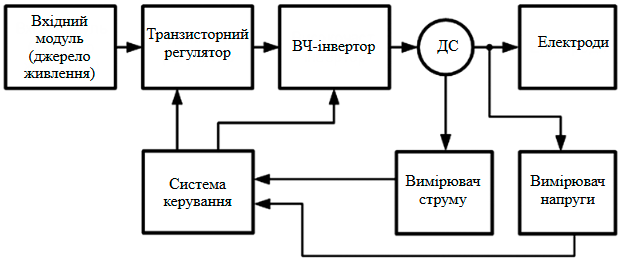Determination of biological tissue parameters for simulation tasks in electrosurgery
Abstract
The problem of creating innovative surgical equipment becomes an urgent necessity in wartime. A promising direction in surgery is the improvement of electrosurgical technology, which is successfully implemented for welding and cutting living biological tissues and is characterized by high speed and proven efficiency. The important aspect of designing electrosurgical equipment is experimental research and verification of the effectiveness of the proposed solutions in practice. However, experiments in this area are complicated by the need to have living tissues at hand, the properties of which are significantly different from the properties of dead biological tissues. So, an adequate mathematical model of living tissue can significantly simplify experimental and adjustment work with the electrical part of electrosurgical equipment in the laboratory. The aim of this work is to experimentally determine the impedance properties of living biological tissues and assess their dependence on the power and duration of the electrosurgical procedure at the operating frequencies of the equipment for further use of the obtained data in creating mathematical models. Using a specially created experimental device, the parameters of biological tissue were determined as the load of the electrocoagulator. By measuring the phase shift between the welding current and the voltage on the electrodes of the electrocoagulator, it was found out that its value does not exceed 1° at different levels of power and duration of exposure for the experimental device with the operating frequency of the electrosurgical equipment. As a result, it is proposed to consider the kind of the impedance of living biological tissues as purely active, since in the entire studied range it is determined mainly by its active component, while the reactive component is insignificant. This approach allows the use of lower-order equations for calculations, which essentially simplifies mathematical models.
References
Tkanesokhranyayushchaya vysokochastotnaya elektrosvarochnaya khirurgiya. Atlas [Tissue-preserving high-frequency electric welding surgery. Atlas] / Ed. by B. E. Paton and O. N. Ivanova. Kyiv: Naukova Dumka, 2009. 200 p. (Rus)
Yadav A., Agarwal L., Jain S. A. et al. Comparison between scalpel incision and electrocautery incision in midline abdominal surgery: a comparative study. International Surgery Journal, 2021, vol. 8, no. 5, pp. 1507–1511. https://doi.org/10.18203/2349-2902.isj20211817
Remizov A. N., Maksina A. G., Potapenko A. Ya. Uchebnik po meditsinskoy i biologicheskoy fizike [Textbook on medical and biological physics]. Moscow: Drofa, 2003. 559 p. (Rus)
Belik D.V. Impedansnaya elektrokhirurgiya (Apparaty i osobennosti primeneniya) [Impedance Electrosurgery (Devices and Application Features)]. Novosibirsk: Nauka, 2000. 253 p. (Rus)
Resistor Guide [Electronic resource]. Regime of access: https://eepower.com/resistor-guide/resistor-fundamentals/resistor-inductance/ (accessed 07.10.2024).
Grover F.W. Inductance Calculations: Working Formulas and Tables. N.Y., Mineola : Dover Publications, 2004. 286 p.
Barry W. W. Power Electronics: Devices, Drivers, Applications, and Passive Components. Barry W Williams, 2006. URL: https://personal.eee.strath.ac.uk/barry.williams/book.html
Wire Self Inductance Calculator [Electronic resource]. Regime of access: https://www.elektroda.com/calculators/passive-tools-wire (accessed 07.10.2024).
Rosa E. B. The self and mutual inductances of linear conductors. Bulletin of the Bureau of Standards, 1908, vol. 4, no. 2, pp. 301–344. https://doi.org/10.6028/bulletin.088
Dean D. A., Ramanathan T., Machado D., Sundararajan R. Electrical impedance spectroscopy study of biological tissues. Journal of Electrostatics, 2008, vol. 66, iss. 3–4, pp. 165–177. https://doi.org/10.1016/j.elstat.2007.11.005
Krezdorn N., Tasigiorgos S., Wo L. et al. Tissue conservation for transplantation. Innovative surgical sciences, 2017, vol. 2, no. 4, pp. 171–187. https://doi.org/10.1515/iss-2017-0010

Copyright (c) 2024 Ievgenii Dziuba, Oleksandr Bondarenko

This work is licensed under a Creative Commons Attribution 4.0 International License.
